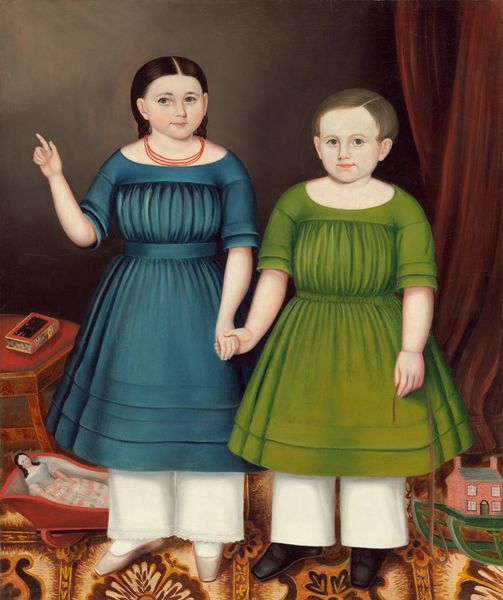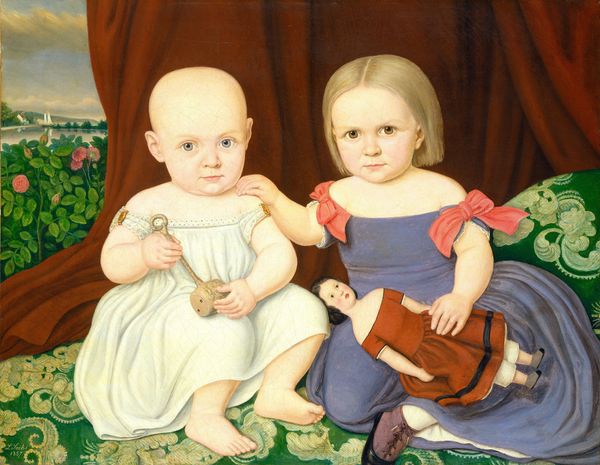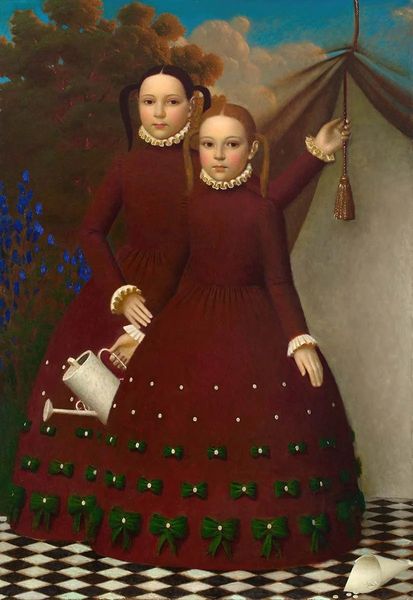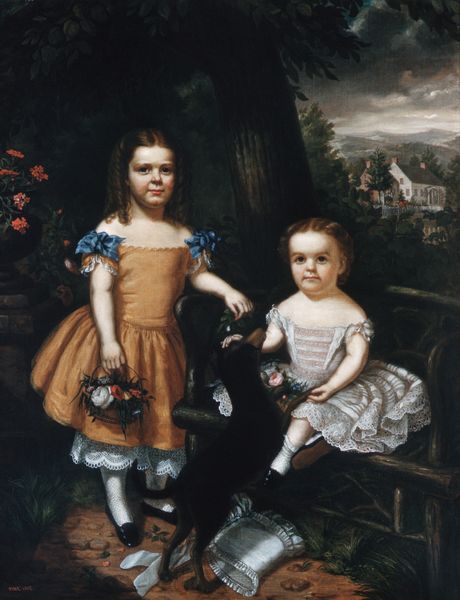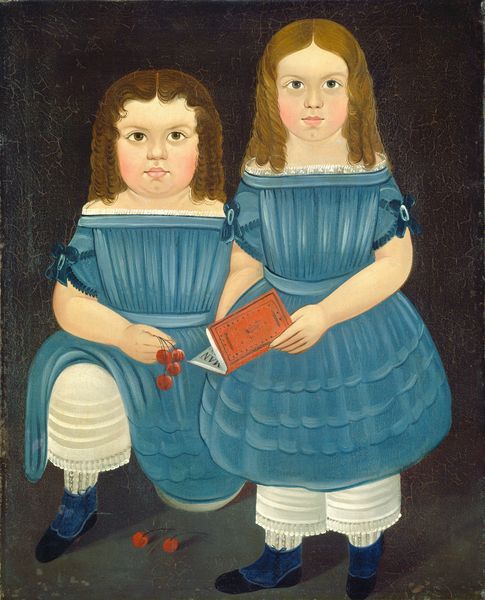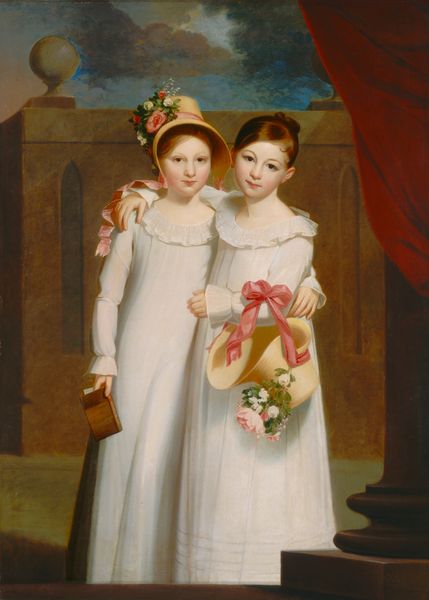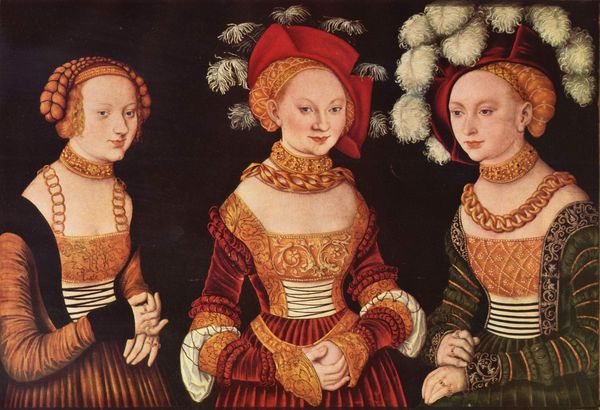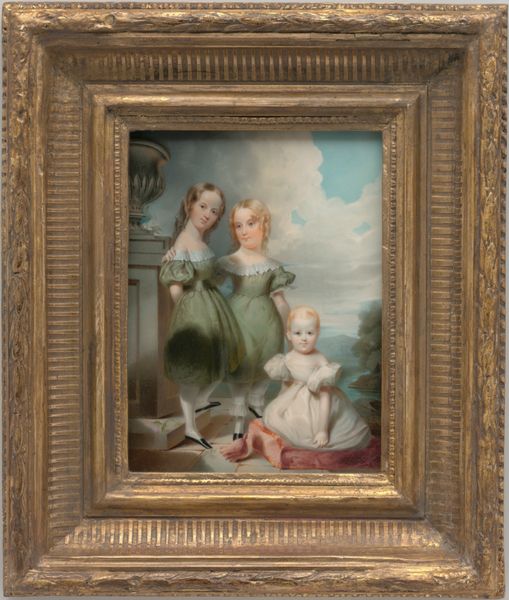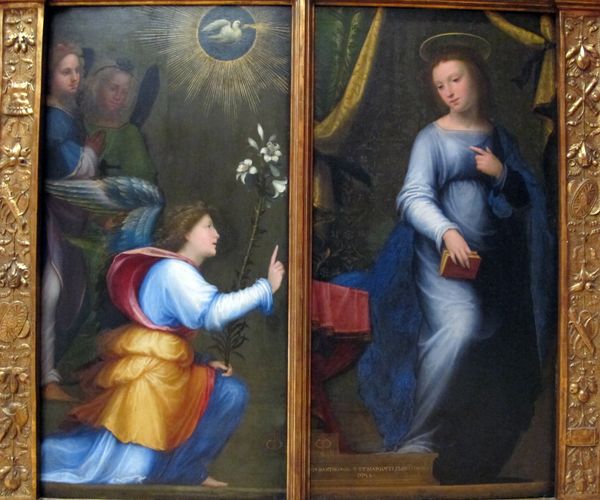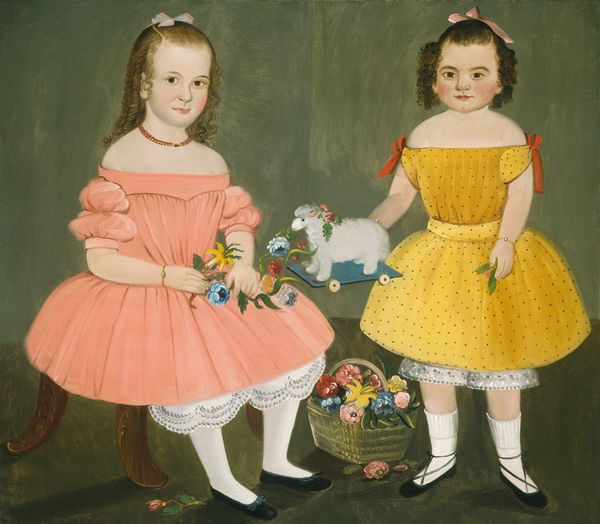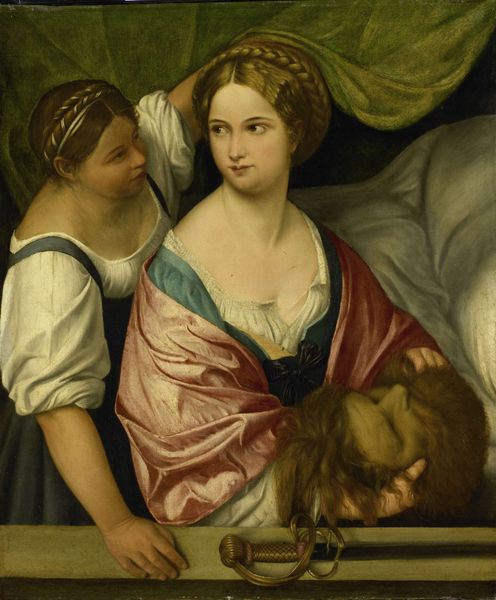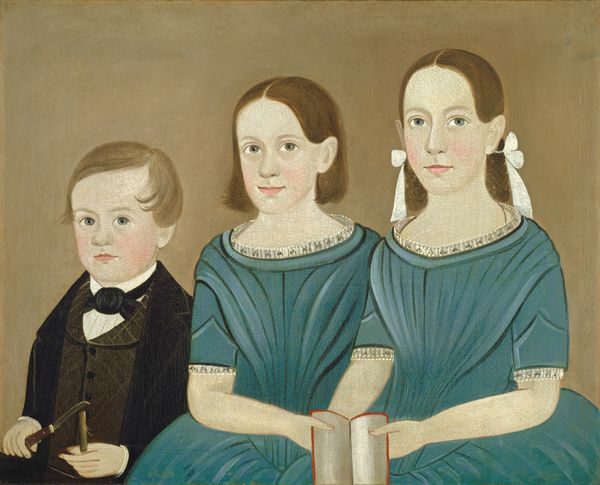
painting, oil-paint, oil-on-canvas
#
portrait
#
character portrait
#
painting
#
oil-paint
#
landscape
#
group-portraits
#
romanticism
#
genre-painting
#
academic-art
#
oil-on-canvas
#
portrait art
Dimensions: 44 3/4 x 57 3/4 in. (113.67 x 146.69 cm) (sight)35 1/2 x 67 x 3 in. (90.17 x 170.18 x 7.62 cm) (outer frame)
Copyright: Public Domain
This double portrait by the New York artist Orlando Hand Bears (1811-1851) is filled with many fascinating details. What stands out to you at first glance? Two sisters with neat brown hair are seated on wooden chairs in an outdoor setting. They wear luxurious silk dresses in a deep petrol blue colour. This simple shade symbolises sophistication and status. These fantastic dresses are prime examples of late 1830s American fashion, with wide off-the-shoulder necklines, fitted waists, and gigantic sleeves. The sleeves puff out at the shoulder before tapering after the elbow – a style known as ‘leg-of-mutton’! In between the two young women sits a basket that is stuffed with an abundance of seashells. It was common for wealthy ladies to collect shells as a pastime in the nineteenth century. The shells have been painted with intricate detail. The vibrant shades of pink, blue, and yellow inject energy into the otherwise muted colour palette. On the left side of the composition is Eliza Ann Dusenberry. A year older than her sister Adelia, Eliza Ann holds a piece of coral. Painted in pure white, the coral is a symbol of balance and purity. Both sisters rest their arms on a wooden chest of drawers, called a commode. Constructed in rich mahogany wood with brass handles, the commode connotes stability and quality. Every aspect of this painting has been considered to communicate a sense of wealth and elegance. The artist specialised in allegorical portraiture, and was often commissioned by wealthy shipping merchants. The Dusenberrys were one such affluent family in New York. In the background, Hand Bears has included a fantastical and idealised landscape scene. This is an unconventional choice for nineteenth century portraiture. The dusky pink light provides a dreamlike atmosphere. What strikes you most about this painting? Do you find anything especially interesting? 👇 Editor: Lucy Jude Grantham
Comments
Join the conversation
Join millions of artists and users on Artera today and experience the ultimate creative platform.
minneapolisinstituteofart almost 2 years ago
⋮
The Dusenberry sisters sit on either side of a commode, or chest of drawers, with a romanticized landscape in the background. The basket of collected shells references a popular pastime among refined young women of the 1800s. Eliza Ann, a year older than her sister Adelia, holds a piece of white coral, considered a protection for children or a symbol of youth and health. Orlando Hand Bears was a native of Sag Harbor, New York. His clients were mostly prosperous merchants and ship captains associated with the whaling industry of eastern Long Island. While double portraits are quite common in his work, the abundant accessories and elaborate detail in this one are exceptional.
